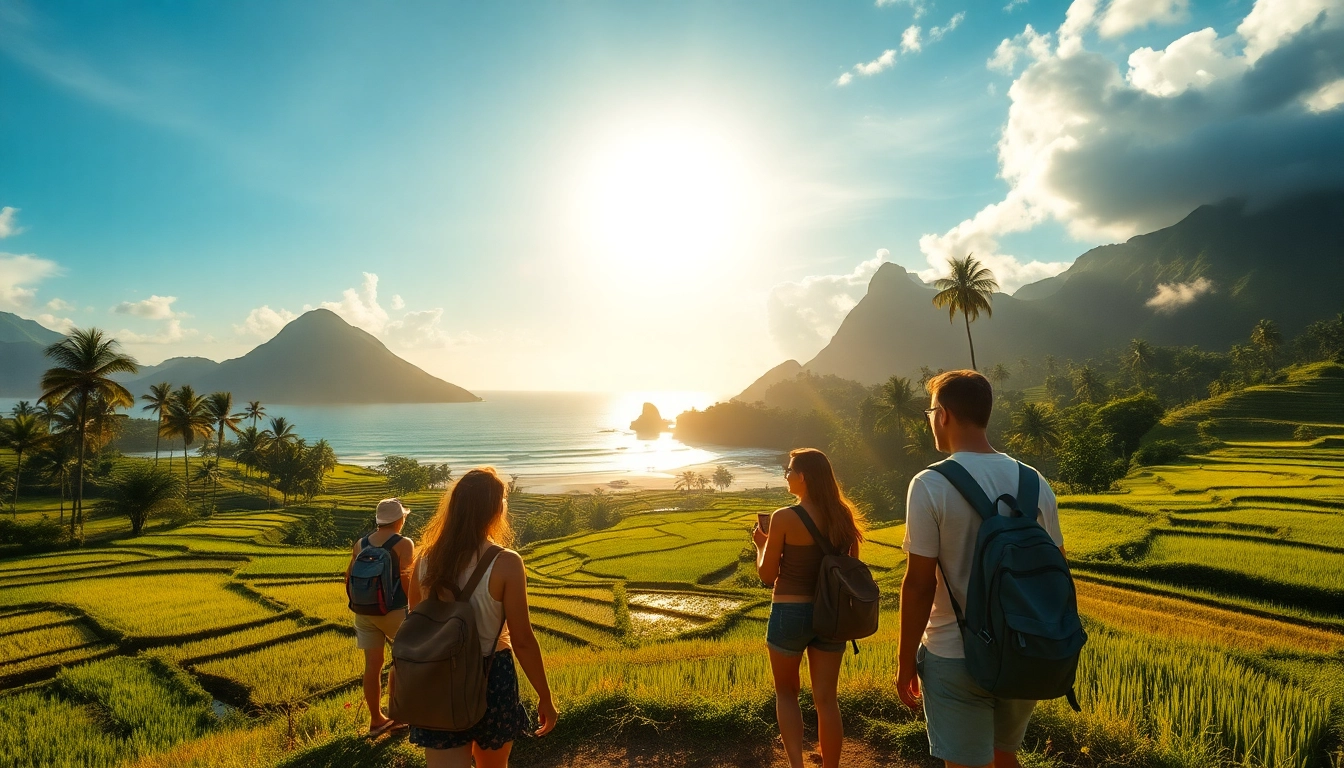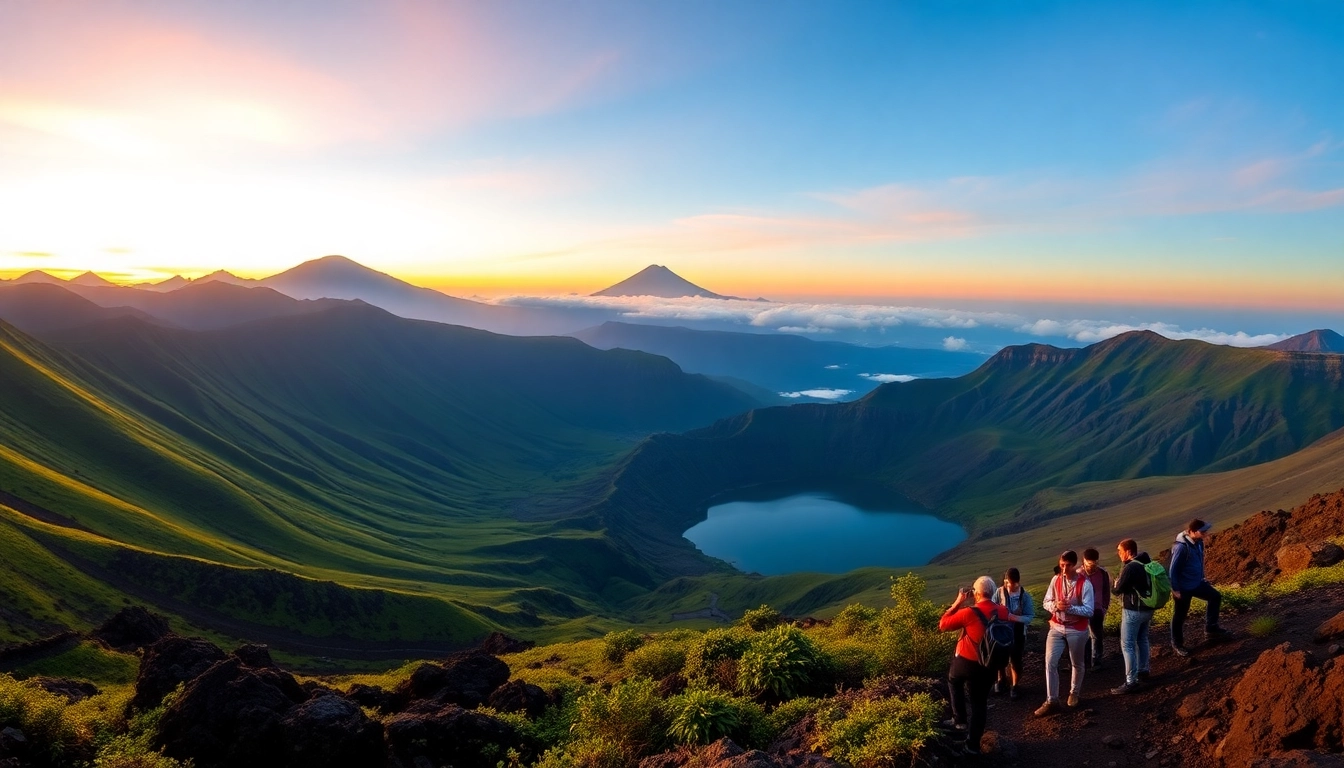Understanding Lombok: Geographic and Cultural Overview
Nestled within the Indonesian archipelago, Lombok is a captivating island renowned for its diverse landscapes and rich cultural tapestry. As part of the West Nusa Tenggara province, Lombok spans approximately 4,500 square kilometers and is home to over 4 million residents, according to projections for 2025. Its unique position, separated from the neighboring island of Bali by the Lombok Strait, grants it distinctive geographic features and cultural influences that attract travelers and scholars alike.
Geographical Features of Lombok and Its Surrounding Islands
Lombok is characterized by a rugged terrain that ranges from lush coastal plains to mountainous highlands. Central to its geography is Gunung Rinjani, Indonesia’s second-highest volcano standing at 3,726 meters above sea level. This dormant stratovolcano forms the backbone of the island, creating fertile valleys and breathtaking landscapes conducive to agriculture and tourism. Surrounding Lombok are several smaller islands, notably the Gili Islands—Gili Trawangan, Gili Meno, and Gili Air—which are renowned for pristine beaches and vibrant coral reefs, making them a must-visit for beach enthusiasts and divers.
The island’s coastline boasts a variety of beaches, from the white sands of Tanjung Aan and Selong Belanak to the iconic Pink Beach, known for its unique coral pink hue. The regional topography influences the climate, which is tropical and divided into distinct wet and dry seasons, ideal for various outdoor activities. The surrounding seas are part of the Coral Triangle, home to some of the world’s richest marine biodiversity, further enhancing Lombok’s ecological significance.
Historical and Cultural Significance of Lombok’s Indigenous Communities
Lombok’s cultural identity is predominantly shaped by the Sasak people, who constitute the largest indigenous community. Their history predates Indonesian independence, with traditions rooted in animism, Hinduism, and Islam, reflecting a complex cultural mosaic. The Sasak community has preserved many traditional crafts, dances, and ceremonies that continue to thrive today, serving as vital expressions of their spiritual and social identity.
Notably, the local architecture—marked by intricate carvings and distinctive roof structures—embodies a harmony between utility and artistry. The ritualistic offerings and ceremonies, such as the Sekaten festival and traditional weaving practices, offer visitors invaluable insights into Sasak spirituality and social cohesion. Their craftsmanship, especially in woven textiles and silverwork, has garnered international recognition, positioning Lombok as a hub of cultural artistry.
Overview of Lombok’s Administrative Regions and Local Distinctions
Lombok is divided into three primary administrative regions: Lombok Barat (West Lombok), Lombok Tengah (Central Lombok), and Lombok Utara (North Lombok), each with distinct characteristics. Lombok Barat features diverse coastal ecosystems and vibrant markets, with its capital being Mataram—an important commercial and cultural hub. Lombok Tengah is famed for the Mount Rinjani National Park, with Senaru and Sembalun serving as popular starting points for trekking expeditions.
Lombok Utara encompasses scenic villages such as Tanjung and Gangga, known for their waterfalls and handicrafts. These regions exhibit variations in language dialects, customs, and economic activities, contributing to Lombok’s overall diversity. Understanding the nuances between these regions is crucial for travelers seeking authentic experiences and for businesses aiming to develop sustainable tourism initiatives.
Top Natural Attractions and Adventure Spots in Lombok
Must-Visit Beaches and Coastal Hotspots
Lombok’s beaches are among the most stunning in Indonesia, offering a spectrum of experiences from tranquil lagoons to surf-friendly waves. Tanjung Aan is celebrated for its turquoise waters and pristine white sands, ideal for sunbathing and picnicking. Selong Belanak is especially popular among beginner surfers thanks to its gentle surf and expansive sands, making it perfect for family getaways and beginner lessons.
For those seeking a unique natural experience, Pink Beach on the southern coast intrigues with its coral-infused pink-hued sands—a rare phenomenon caused by red coral fragments mixed with white sand. The beaches of the Gili Islands are also notable: Gili Trawangan for lively nightlife, Gili Meno for serenity and snorkelling, and Gili Air for a balanced mix of relaxation and adventure.
Climbing Gunung Rinjani: Tips for Trekking Expeditions
Climbing Gunung Rinjani is a major attraction for adventure enthusiasts. The trek typically spans 2-4 days, depending on the route and pace. Successful ascents require physical preparation, proper gear, and awareness of weather conditions, which can change rapidly on the mountain. Guides and organized tours are recommended, ensuring safety and enriching the experience with local insights.
Highlights include views of the caldera lake, Segara Anak, and the stunning sunrise from the crater rim. Acclimatization is key, and travelers should plan their summit attempt during the dry season—April to October—for the best weather conditions. It’s also an opportunity to witness rare flora and fauna endemic to this volcanic environment.
Waterfalls, Lakes, and Other Scenic Outdoor Experiences
Beyond volcanos and beaches, Lombok offers numerous waterfalls such as Sendang Gile and Tiu Kelep near Mount Rinjani, renowned for their cool waters and lush surroundings. These sites are accessible via well-marked trails and often combined with visits to nearby hot springs.
Lake Segara Anak, situated within Rinjani’s caldera, presents a mystical setting with its emerald waters and volcanic backdrop. Other attractions include the Benang Stokel and Benang Kelambu waterfalls, which are less crowded and offer serene environments for picnics, swimming, and photography. Exploring these outdoor sites provides a deeper appreciation of Lombok’s ecological diversity and natural beauty.
Unique Cultural Experiences and Local Heritage
Traditional Sasak Crafts, Dances, and Ceremonies
The cultural richness of Lombok is vividly reflected in its traditional crafts—most notably, weaving and silver jewelry. The Sasak people’s textiles often feature intricate patterns symbolizing local myths and daily life, displayed during craft markets in Sukarara Village. Dances such as the Gendang Beleq are performed during festivals, showcasing energetic percussion and communal participation.
Religious ceremonies, blending Islamic and indigenous practices, are integral to community life. The Bau Nyale festival, commemorating the legendary princess Nyale, involves catching sea worms (Nyale) during the lunar phase, symbolizing fertility and renewal. Participating or observing these events offers cultural immersion and insight into Lombok’s spiritual worldview.
Visiting Authentic Villages and Community-Based Tourism
Community-based tourism initiatives are flourishing in Lombok, fostering sustainable development and cultural preservation. Villages like Sade and Desa Sembalun welcome visitors with homestays, allowing direct engagement with local families and participation in daily activities such as farming, cooking, and traditional crafting. These programs empower local communities economically while providing tourists with authentic, immersive experiences.
Eco-tourism and responsible travel are emphasized to protect Lombok’s environmental and cultural heritage. Visitors are encouraged to choose experiences that support conservation efforts and promote respectful engagement with local customs and traditions.
Local Cuisine and Culinary Adventure in Lombok
Lombok’s cuisine reflects its diverse cultural influences and fertile lands. Dishes like Ayam Taliwang—a spicy grilled chicken—are staples, seasoned with local chili and spices. Sate Lotto, skewers of seasoned meat grilled over coconut shell embers, and Plecing Kangkung—a fresh vegetable salad with chili and lime—are also popular.
Street food markets and local warungs (small eateries) offer a sensory-rich culinary adventure. Innovative chefs are blending traditional flavors with modern techniques, creating a vibrant food scene. Exploring Lombok’s culinary landscape is an essential component of cultural appreciation and enjoyment.
Planning Your Trip: Practical Tips and Travel Essentials
Best Time to Visit Lombok for Weather and Festivals
The optimal period to visit Lombok is during the dry season from April to October, when weather conditions are most favorable for outdoor activities. The peak tourist months are July and August, coinciding with school holidays and local festivals. Notable events include the Bau Nyale festival, typically held in February or March, which offers a unique cultural spectacle.
Travel Options, Accommodations, and Transportation Guides
Lombok is accessible via Lombok International Airport (YIA), with direct flights from Jakarta, Bali, and other regional hubs. Domestic flights are the most convenient option for expedited travel. For overland transport, options include rent-a-motorbike, taxis, and private car hires. Accommodation ranges from budget hostels to luxurious resorts, with popular areas being Senggigi, Kuta, and the Gili Islands.
Many travelers favor renting a scooter for flexibility, but caution is advised due to varying road conditions. Organized tours and private drivers can also enhance safety and convenience while exploring more remote sites.
Safety Tips and Cultural Etiquette for Visitors
Respect for local customs and traditions is essential. Dress modestly when visiting religious sites, remove shoes upon entering, and seek permission before photographing locals. Be cautious while swimming or surfing in unfamiliar waters, and always adhere to safety guidelines during treks. Health precautions include drinking bottled water, using insect repellent, and staying updated on travel advisories.
Future Trends and Development in Lombok Tourism
Emerging Eco-tourism and Sustainable Initiatives
Lombok is increasingly embracing eco-tourism to combat environmental degradation and over-tourism. Initiatives include marine protected areas, coral reef conservation programs, and eco-lodge accommodations that minimize ecological footprints. The local government and NGOs are collaborating with communities to develop sustainable tourism models that balance economic growth with environmental preservation.
Initiatives such as beach cleaning campaigns, turtle conservation projects, and responsible snorkeling tours are gaining momentum. These efforts not only protect the island’s natural resources but also appeal to environmentally conscious travelers seeking authentic experiences.
Innovative Tour Packages and Personalized Experiences
The evolving travel market is seeing a shift toward personalized and experiential travel. Custom tour packages incorporating spiritual retreats, culinary classes, wellness tourism, and adventure excursions are in high demand. Local operators are increasingly offering tailor-made experiences, integrating cultural immersion with outdoor activities such as cycling through rice terraces or participating in traditional festivals.
Digital platforms enable travelers to design their itineraries, ensuring they access unique, off-the-beaten-path experiences. These developments position Lombok as a versatile destination catering to diverse preferences.
How Lombok is Positioning Itself as a Top Global Destination
Strategic marketing initiatives, infrastructure improvements, and an emphasis on sustainable practices are elevating Lombok’s profile on the international stage. Collaborations with global travel agencies, participation in international tourism fairs, and digital marketing campaigns showcase Lombok’s multifaceted appeal—diverse landscapes, rich culture, and eco-conscious tourism.
The island aims to attract a broader demographic, from luxury travelers to backpackers, fostering a resilient tourism sector capable of weathering global shifts and environmental challenges.



